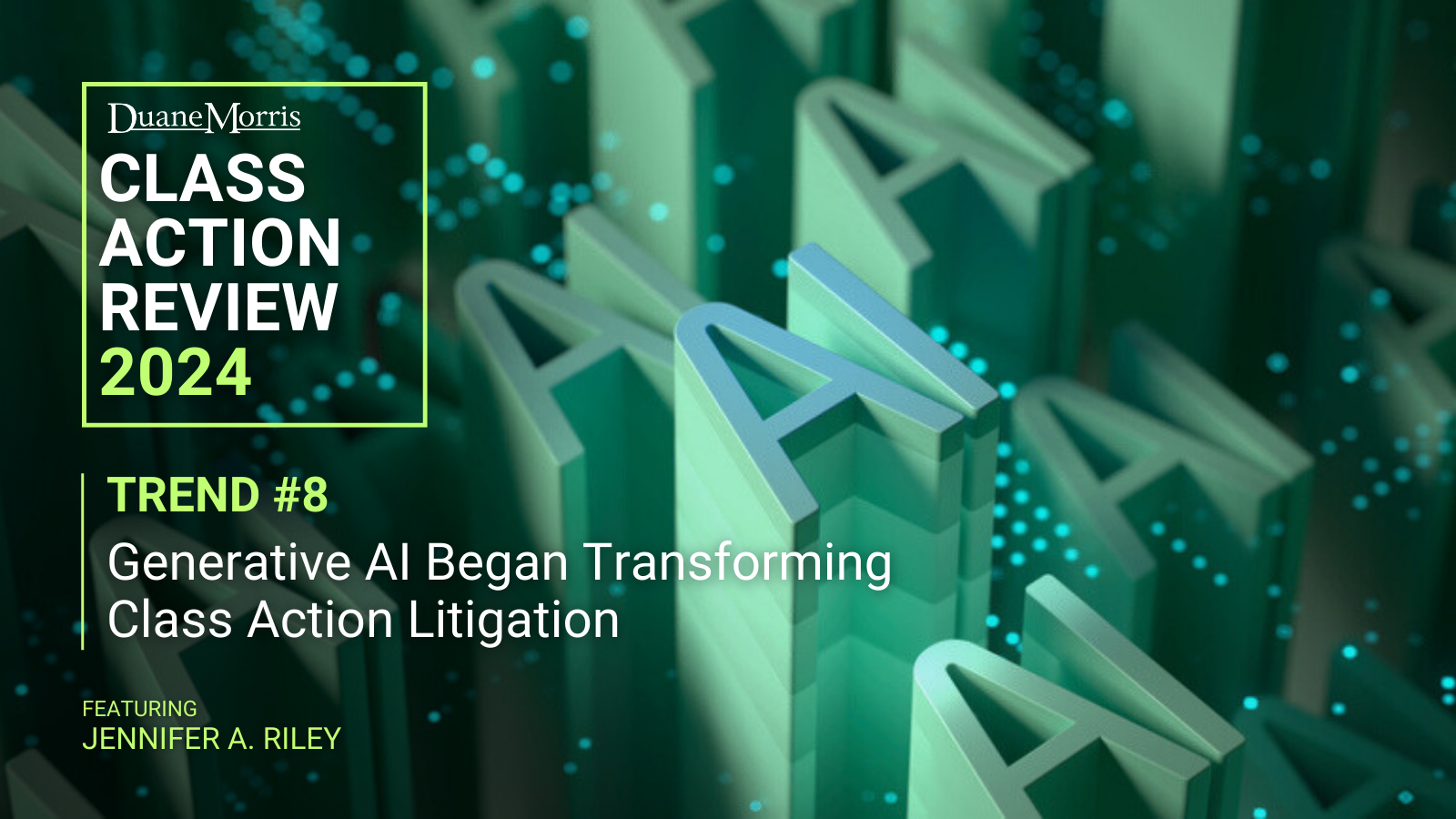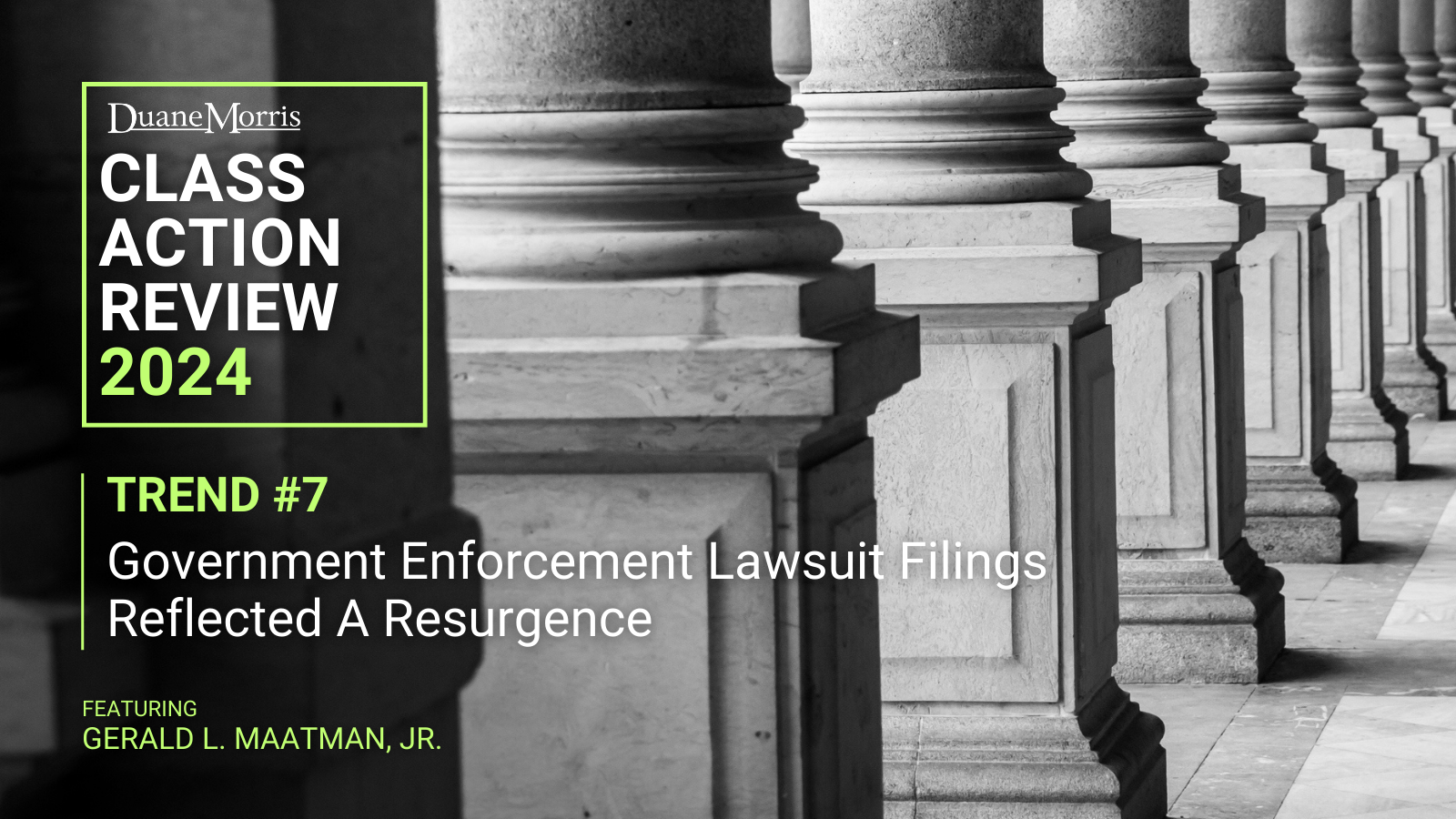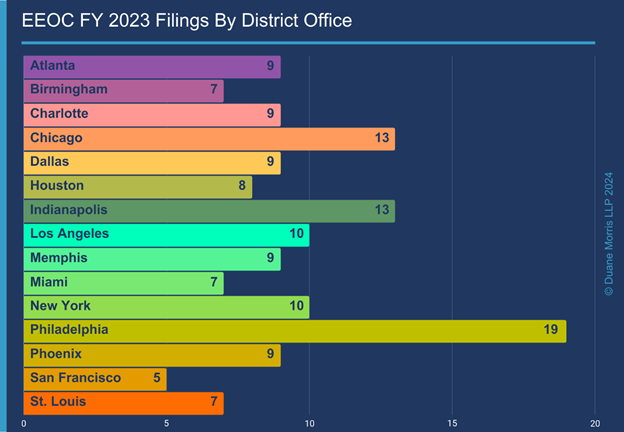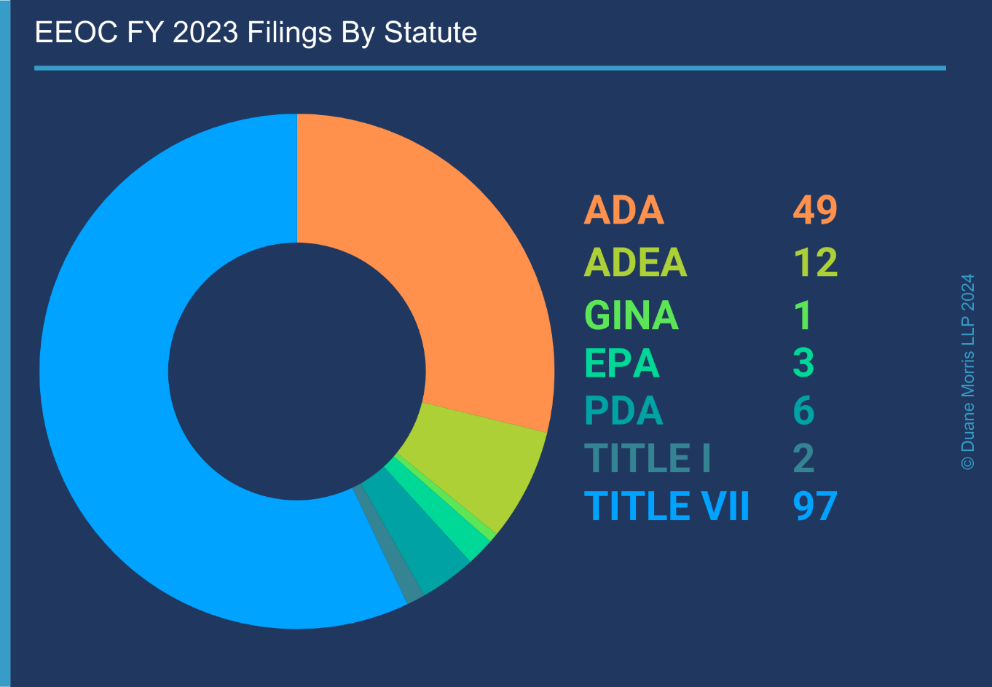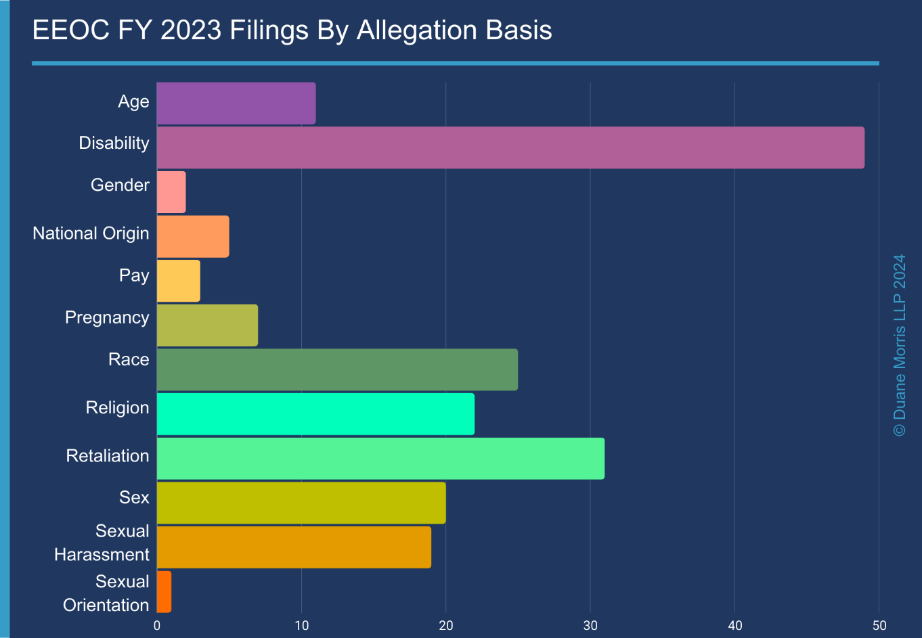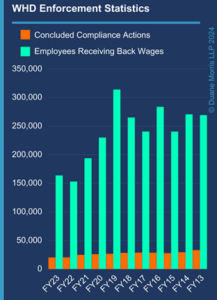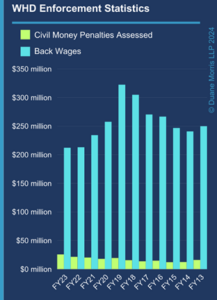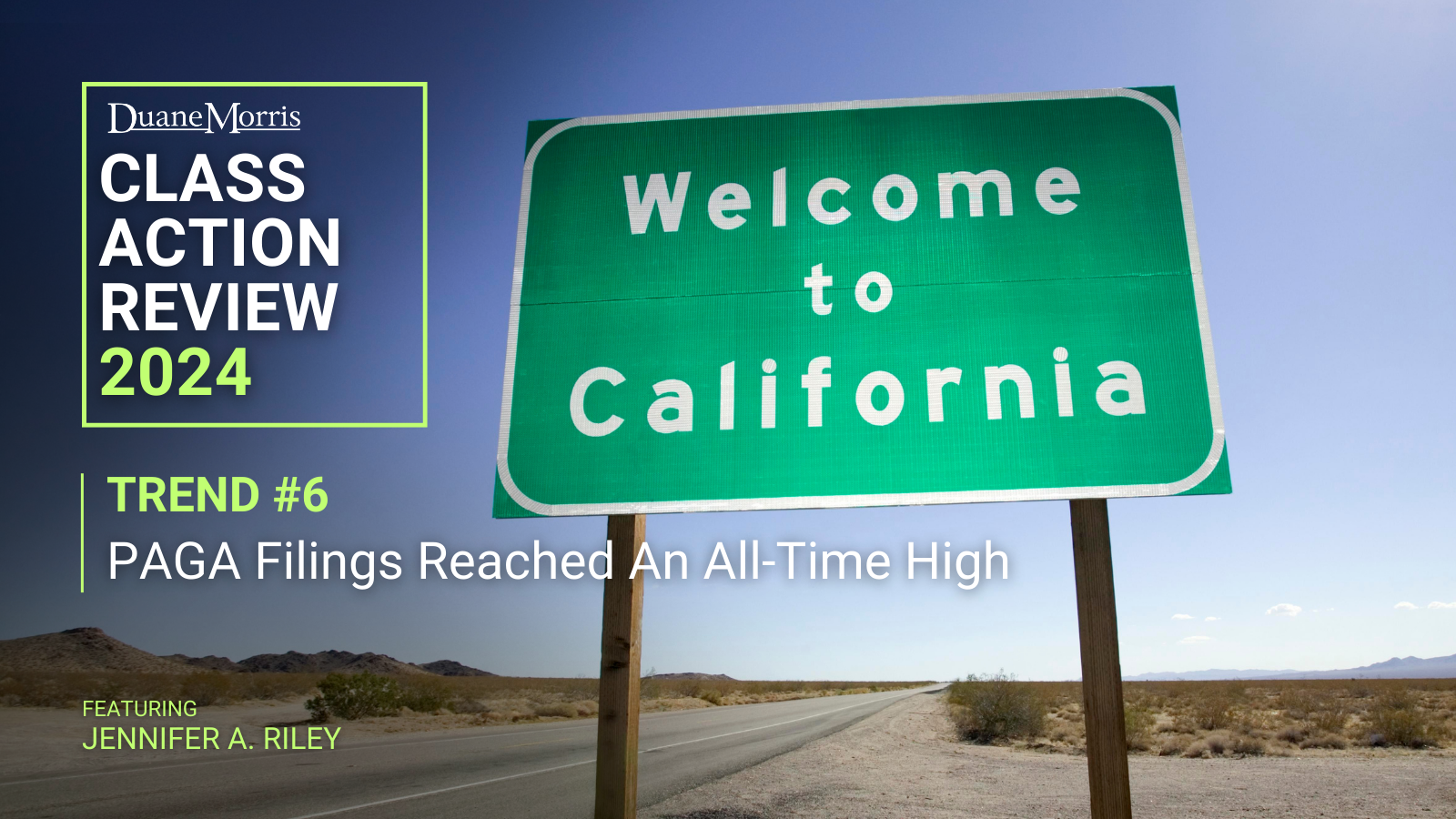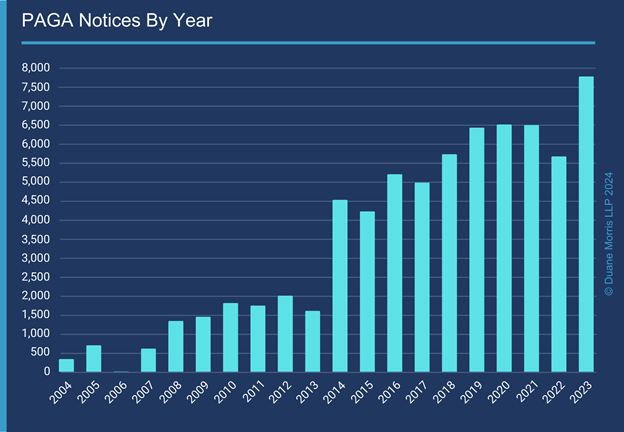By Gerald L. Maatman and Jennifer A. Riley
Duane Morris Takeaway: During the past year, the label “ESG” became “mainstream,” and discussion of its impact became a recurring topic of conversation in boardrooms across the country. ESG refers to broadly to “environmental, social, and governance,” which many companies have embraced as part of their business plans and corporate missions.
Watch the video below as Duane Morris partner Jerry Maatman discusses the impact of ESG on class action litigation and how this trend will evolve in 2024.
DMCAR Trend #9 – ESG Class Action Litigation Hit Its Stride
ESG was not immune to lawsuits, and we saw a steady influx of class action litigation in two particular ESI spheres – (i) product advertising and (ii) employment and DEI-related lawsuits.
 The former focused on product advertising and, in particular, on allegations that marketing campaigns touting products as “green” or “sustainable” or “carbon neutral,” among other things, are false, misleading, and deceptive. Commonly called “greenwashing,” these claims generally refer to false or misleading statements about the environmental benefits or about the performance of particular products or operations and, in particular, tend to target statements touting the “green” or “sustainable” or “eco-friendly” characteristics of such products or operations.
The former focused on product advertising and, in particular, on allegations that marketing campaigns touting products as “green” or “sustainable” or “carbon neutral,” among other things, are false, misleading, and deceptive. Commonly called “greenwashing,” these claims generally refer to false or misleading statements about the environmental benefits or about the performance of particular products or operations and, in particular, tend to target statements touting the “green” or “sustainable” or “eco-friendly” characteristics of such products or operations.
Most often, plaintiffs’ class action attorneys file greenwashing lawsuits as class actions. These lawsuits largely focus on claims that defendants marketed products as “environmentally responsible,” “sustainably sourced,” or “humanely raised,” arguing that such misleading claims induce purchasers to pay a premium for “greener” products.
In Smith, et al. v. Keurig Green Mountain, Inc., No. 4:18-CV-06690 (N.D. Cal.), for example, the plaintiffs filed a class action lawsuit asserting various claims, including breach of warranty, misrepresentation, and violation of the California Unfair Competition Law, targeting Keurig’s representations regarding its K-cup coffee pods. In particular, Keurig marketed its K-cups as recyclable with labeling that consumers could “[h]ave [their] cup and recycle it, too.” The plaintiffs claimed that, in fact, the K-cups were not recyclable. In 2019, the court denied Keurig’s motion to dismiss, and, in 2020, the court granted the plaintiff’s motion for class certification. In February 2023, the court granted final approval of class action settlement for $10 million.
In Dwyer, et al. v. Allbirds, 598 F. Supp. 3d 137 (S.D.N.Y. 2022), the plaintiff filed a similar greenwashing class action alleging that defendant marketed its shoes, in part, based on their sustainability using statements like “Sustainability Meets Style” and “Environmentally Friendly.” The plaintiff brought claims for breach of express warranty, fraud, and unjust enrichment and asserted violations of §§ 349-350 of the New York General Business Law. Allbirds maintained a website showing the carbon footprint associated with its products based on a life-cycle analysis (LCA), and showing the environmental impact of its materials based on the third-party Higg Material Sustainability Index (Higg MSI). The plaintiff attacked the LCA tool and the Higg MSI standard as incomplete measurements of product sustainability. The court granted Allbirds’ motion to dismiss for failure to state a claim.
In Lizama, et al. v. H&M Hennes & Mauritz LP, No. 4:22-CV-1170 (E.D. Mo. 2023), the plaintiffs filed a class action complaint alleging that the retailer deceptively attempted to “greenwash” its allegedly environmentally damaging practices. H&M’s “Conscious Choice” collection included items made from recycled and organic materials that H&M marketed as “more sustainable.” The plaintiffs alleged that, in fact, H&M’s clothing was not sustainable because the synthetic materials in the collection had a negative environmental impact. The plaintiffs asserted claims for violation of various California and Missouri statutes and sought to certify various sub-classes. On May 12, 2023, the court granted the defendant’s motion to dismiss the California claims for lack of personal jurisdiction and dismissed the Missouri claims because it found the alleged statements not misleading as a matter of law.
Relative to employment and DEI-related lawsuits, the plaintiffs’ class action bar focused numerous claims based on allegations that companies failed to live up to their representations regarding diversity, equity, and inclusion or breached their DEI commitments.
Plaintiffs anchored many of their class claims on board-related DEI commitments, employment discrimination, and workplace safety issues. In the corporate DEI cases, plaintiffs asserted claims that companies allegedly failed to live up to their DEI commitments or failed to abide by their DEI policies or practices. In many of the ESG-related employment discrimination cases, plaintiffs focused on claims that corporate officers or directors breached their fiduciary duties by failing to address employment discrimination, by adopting policies that discriminate, or by failing to address safety concerns.
In Bucks County Employees Retirement System v. Norfolk Southern Corp., No. 2:23-CV-982 (N.D. Ga. 2023), for instance, the plaintiff filed a securities class action against the defendant and three of its managers alleging that they misrepresented the corporation’s worker safety practices prior to a chemical train derailment, leading investors to purchase company stock at inflated levels. The plaintiff alleged that the defendants committed to safety as a “core value” in their public statements and SEC filings but, in reality prioritized more lucrative practices at the expense of safety, such as longer and heavier trains and lower headcounts. The plaintiff asserted that such culture of “increased risk-taking” made the company more vulnerable to derailments.
As companies continue to add statements regarding their environmental impact or social responsibility to enhance their marketing efforts, communicate their company values, and/or attempt to appeal to consumers and shareholders attuned to ESG considerations, we expect to see ESG class actions continue their growth trajectory.


